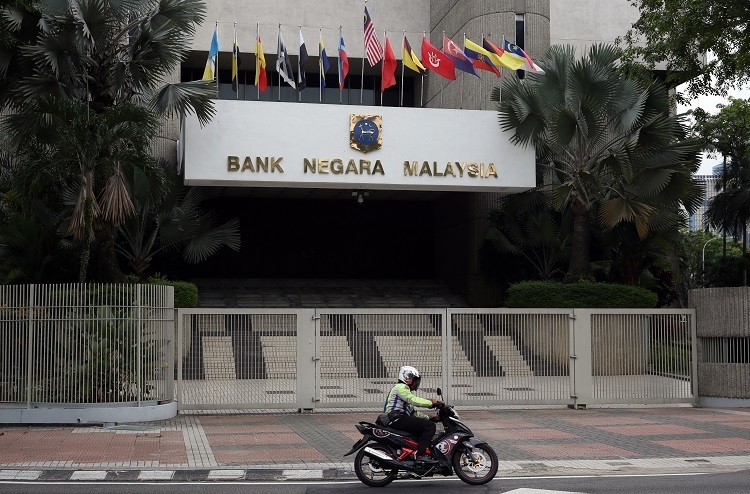
KUALA LUMPUR (July 8): Bank Negara Malaysia (BNM) has cut the overnight policy rate (OPR) by 25 basis points (bps) to the lowest-ever level of 1.75%.
This is the fourth cut in 2020. The central bank has slashed 125bps so far this year.
With OPR being at a historic low, OCBC Treasury Research economist Wellian Wiranto calls it "a testament of just how unprecedented our current situation has been".
While BNM noted that "the reduction in the OPR provides additional policy stimulus to accelerate the pace of economic recovery", Wiranto said the extensive focus on the risk of virus resurgence suggests that the current rate cut may be just as much about bolstering Malaysia's defences against the onslaught of what may come as spurring the ongoing recovery.
RHB Research Institute's chief Asean economist Peck Boon Soon believes that this aggressive rate cut reinforces that BNM is anticipating a worse-than-anticipated year, saying that BNM's gross domestic product (GDP) contraction is likely to be much worse than its earlier forecast of -2% to +0.5%.
"This is because the outbreak of the Covid-19 is much more serious than initially thought as the US and some Middle East countries are facing a second wave, while emerging economies like India, Latin America, South Africa and Indonesia are still in the first wave and seeing more new cases every day," he said.
Currently, RHB Research is forecasting a 4% contraction in GDP for 2020.
Peck is of the view that the central bank "could have preserved its bullet" as economic activity is improving and at the same time allow the huge fiscal stimulus to take its course. "It (BNM) could still cut rates later if the recovery is not up to expectation," he added.
UOB Malaysia senior economist Julia Goh told The Edge CEO Morning Brief that BNM's most recent decision on OPR seems to suggest that there are more uncertainties and downside risks ahead.
"I think it (downside risks) also depends on how effective the fiscal and monetary stimulus measures are to buffer the economy," said Goh.
Meanwhile, Affin Hwang Investment Bank Bhd chief economist Alan Tan commented that BNM's decision to reduce the OPR this time around is more of a "pre-emptive move" or "precautionary measure" in view of the possible downside risks from the resurgence Covid-19 outbreak, which may lead to the reimposition of containment measures as well as concerns over weaknesses in labour market's condition.
"It's more of a 'let's not take the risk and cut first'," said Tan. Therefore, when the situation improves, BNM will then likely raise the interest rates again towards the second half of 2021, said Tan.
BNM, in a statement yesterday, cautioned that risk aversion was still elevated, although financial conditions have improved. The central bank has guided that downside risks remain especially if a second wave causes another round of containment measures.
Views are divided on further rate cut for 2020
Most of the local economists contacted are of the view that BNM is unlikely to trim OPR for the rest of the year. It will only do so if the Covid-19 outbreak worsens.
Socio-Economic Research Centre executive director Lee Heng Guie said BNM will continue to assess the evolving developments that warrant further review of monetary accommodation, noting that the OPR is likely to stay at the current level as it keeps the ammunition for buffers, should the threat to growth accelerate.
He added the latest rate cut is to safeguard the mending economic activities, which bottomed out in the second quarter of this year.
Affin Hwang's Tan, who also believes that BNM will keep its OPR at 1.75% until year end, pointed out that various international agencies are expecting a sharp recovery in Malaysia's GDP growth by a range of between 6.3% and 7.5% in 2021, after the sharp contraction of economic growth in 2020.
"Some macro indicators are slowly showing improvement in economic activity following the reopening of the economy, especially on private consumption spending, supported by the smooth implementation of fiscal stimulus packages," said Tan.
Nonetheless, foreign research firms are not discounting BNM cutting another 25bps to end the year at an unprecedented low of 1.5% in the remaining monetary policy meetings this year on Sept 10 and Nov 3.
UOB Global Economics and Markets Research economists are now pencilling in another 25bps cut as BNM leaves the door open alongside projected deflation this year.
"However, we are cautious about the effectiveness of further rate cuts after four successive cuts," they wrote, in a note yesterday.
"Interest rates are already at record lows, which makes it more challenging to manoeuvre if a second wave hits or other negative surprises materialise," they added.
Likewise, OCBC's Wiranto now sees a good chance that BNM may have to bring the OPR down yet again to 1.5% as soon as the next meeting in September, given the increasingly real potential for the virus resurgence to deal the global economy another severe blow — and BNM's resolute dovishness to continue doing what it can to limit what Malaysia has to suffer through.
Stay safe. Keep updated on the latest news at www.EdgeProp.my
TOP PICKS BY EDGEPROP

Bandar Puncak Alam
Bandar Puncak Alam, Selangor

Trillium, Perdana Lakeview East
Cyberjaya, Selangor

Long Branch Residences
Kota Kemuning, Selangor

SS 21, Damansara Utama
Petaling Jaya, Selangor





















